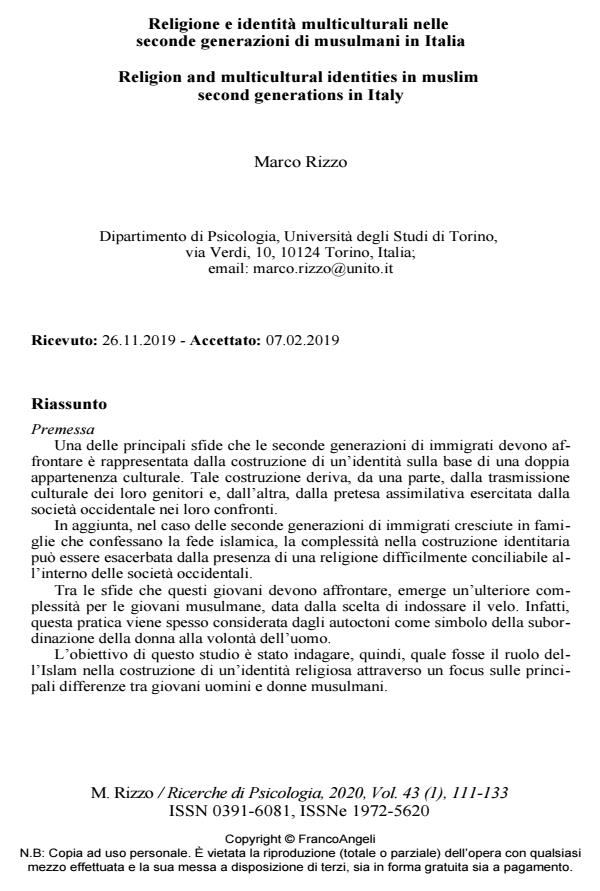Religion and multicultural identities in muslim second generations in Italy
Journal title RICERCHE DI PSICOLOGIA
Author/s Marco Rizzo
Publishing Year 2020 Issue 2020/1
Language Italian Pages 24 P. 111-134 File size 249 KB
DOI 10.3280/RIP2020-001006
DOI is like a bar code for intellectual property: to have more infomation
click here
Below, you can see the article first page
If you want to buy this article in PDF format, you can do it, following the instructions to buy download credits

FrancoAngeli is member of Publishers International Linking Association, Inc (PILA), a not-for-profit association which run the CrossRef service enabling links to and from online scholarly content.
Introduction. One of the main challenge for the second generation of immigrants is represented by the construction of an identity on the base of a double cultural membership. This construction is the result, on the one hand, of the cultural transmission of their parents and, on the other hand, of the assimilative claim made by western society towards them. In addition, in the case of second generations of immigrants who grew up in families confessing the Islamic faith, the complexity of identity construction can be exacerbated by the presence of a religion that is difficult to reconcile within Western societies. Among the challenges that these young people have to face, for Muslim women emerges a further difficulty from the choice to wear the veil, a practice often considered by the natives as a subordination of women to the will of men. The aim of the study was to investigate the role of Islam in the construction of a religious identity through a focus on the main differences between young Muslim men and women. Method . In a qualitative study, through semi-structured interviews, the role of the Islamic religion in the identity construction in a sample of 20 second generation young Moroccans (F = 10; age 18-27; M = 21; SD = 2.3) was investigated. Results. The results showed a relationship between the gender of the participants and the way they expressed religion. For young Muslim men, is considered an inherited cultural aspect. For young Muslims women, instead, the Islamic religious identity is conceived as a support for the affirmation of a multicultural identity, mainly through the free choice to wear the veil.
Keywords: Muslim second generation, Islam, identity, gender difference, veil..
- Migrazioni e psicologie. Introduzione al Forum Alessandro Antonietti, Antonella Marchetti, in RICERCHE DI PSICOLOGIA 1/2020 pp.13
DOI: 10.3280/RIP2020-001002
Marco Rizzo, Religione e identità multiculturali nelle seconde generazioni di musulmani in Italia in "RICERCHE DI PSICOLOGIA " 1/2020, pp 111-134, DOI: 10.3280/RIP2020-001006